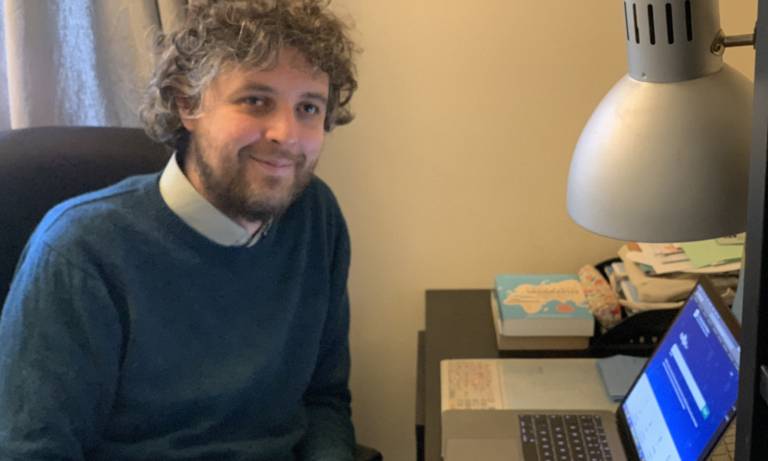Winner of the Harinarayan Young Neuroscientist Award 2021 - Dr Gabriele Lignani
23 June 2021
Dr Gabriele Lignani, a Senior Research Fellow in the Department of Clinical and Experimental Epilepsy at the Queen Square Institute of Neurology, picked up the prestigious award for his research into Activity-dependent Gene Therapy for Intractable Epilepsy.

Commenting on his award win, Dr Lignani said: “I didn’t expect [to win] at all, so my first reaction was astonishment. Then when I fully realised, I was very happy and honoured!
“I believe I was selected because my latest research on an innovative gene therapy approach for epilepsy can be a game-changer to tackle this pathology and improve the life of patients with epilepsy,” he added.
“I need to thank all the lab members for this achievement, without them this would not have been possible! Despite the current Covid-19 situation, they worked hard to continue our research.”
Dr Lignani’s current research is focused on understanding epilepsy and developing genetic therapies to treat this pathology.
The main focus of his lab is finding novel gene therapy approaches for intractable neurological diseases, with rapid potential for translation. His research starts by investigating the pathophysiological mechanisms of disease and then use novel insights to develop and improve therapeutic tools to cure them.
His team uses cutting-edge technologies such as CRISPR (Clustered Regularly Interspaced Short Palindromic Repeats) and synthetic promoters to overcome current limitations to gene therapy and develop new approaches for curing currently untreatable genetic diseases such as Dravet Syndrome and acquired drug-resistant temporal lobe epilepsies.
Dr Lignani said receiving this award is a testament to the great work that members of his lab are doing and that their work is well-received in the international epilepsy community. “This means we are on the right path!”
Going forward Dr Lignani said he will continue to work hard to find effective treatments for patients with epilepsy, starting from this success and broadening his research approaches.
 Close
Close

